| Bloom size: | Medium: 2-3" |
| Petal count: | full: 26-40 petals |
| Rose bloom color: | White and white blend |
| Rebloom: | None |
| Class: | Other: Hybrid banksia, found rose |
| Growth Habit: | Climbing 8 to 40 feet |
| Fragrance: | Strong |
| Misc: | Thornless or almost thornless |
| Hybridizer & year: | Discovered by Robert Fortune, circa 1840 |
| Optimal growing zones: | USDA zone 7 and warmer |
| Plant Habit: | Shrub |
| Life cycle: | Perennial |
| Sun Requirements: | Full Sun |
| Soil pH Preferences: | Moderately acid (5.6 – 6.0) Slightly acid (6.1 – 6.5) Neutral (6.6 – 7.3) Slightly alkaline (7.4 – 7.8) |
| Minimum cold hardiness: | Zone 7a -17.8 °C (0 °F) to -15 °C (5 °F) |
| Plant Height: | Up to 40 feet |
| Plant Spread: | 8 feet |
| Leaves: | Deciduous |
| Flowers: | Showy Fragrant |
| Flower Color: | White |
| Flower Time: | Late spring or early summer |
| Uses: | Windbreak or Hedge Cut Flower |
| Wildlife Attractant: | Bees |
| Propagation: Other methods: | Cuttings: Stem Cuttings: Tip |
| Parentage: | Rosa laevigata x Rosa banksiae |
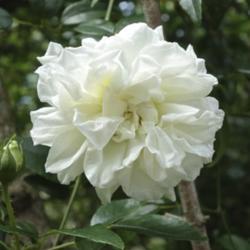

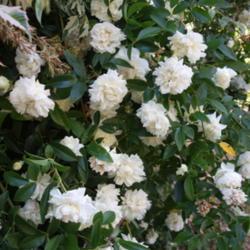
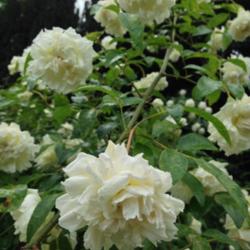

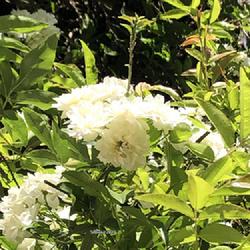
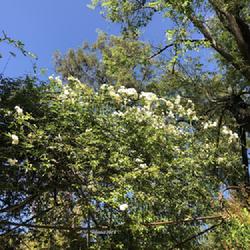
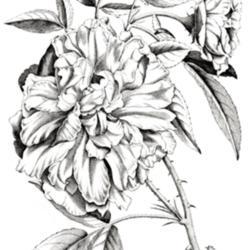
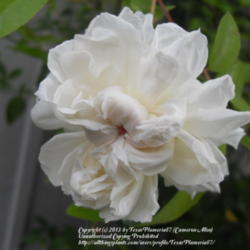
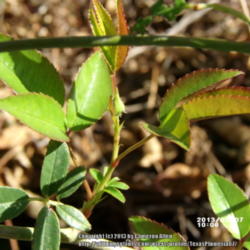

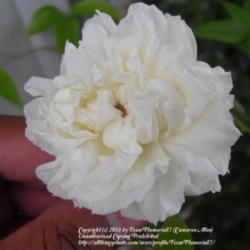
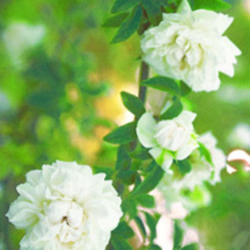

« Add a new plant to the database
» Search the Roses Database: by characteristics or by cultivar name
« See the general plant entry for Roses (Rosa)